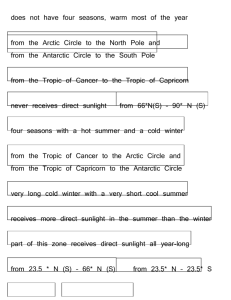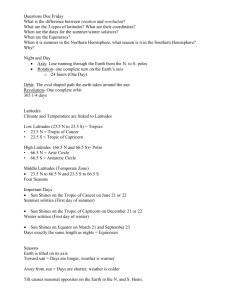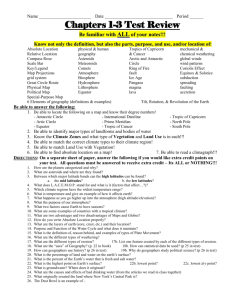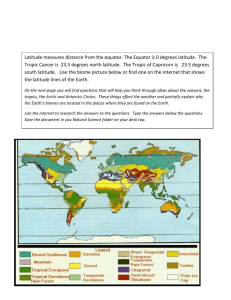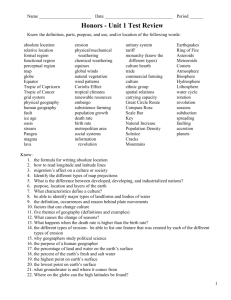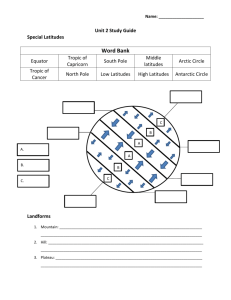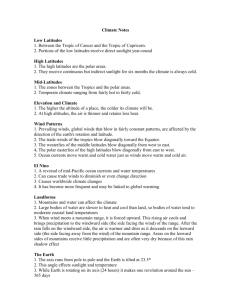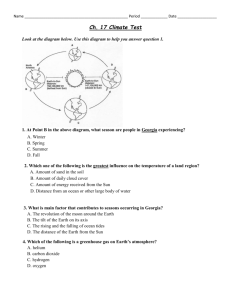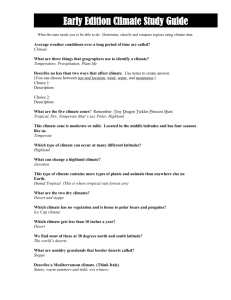Effects of Latitude (p
advertisement
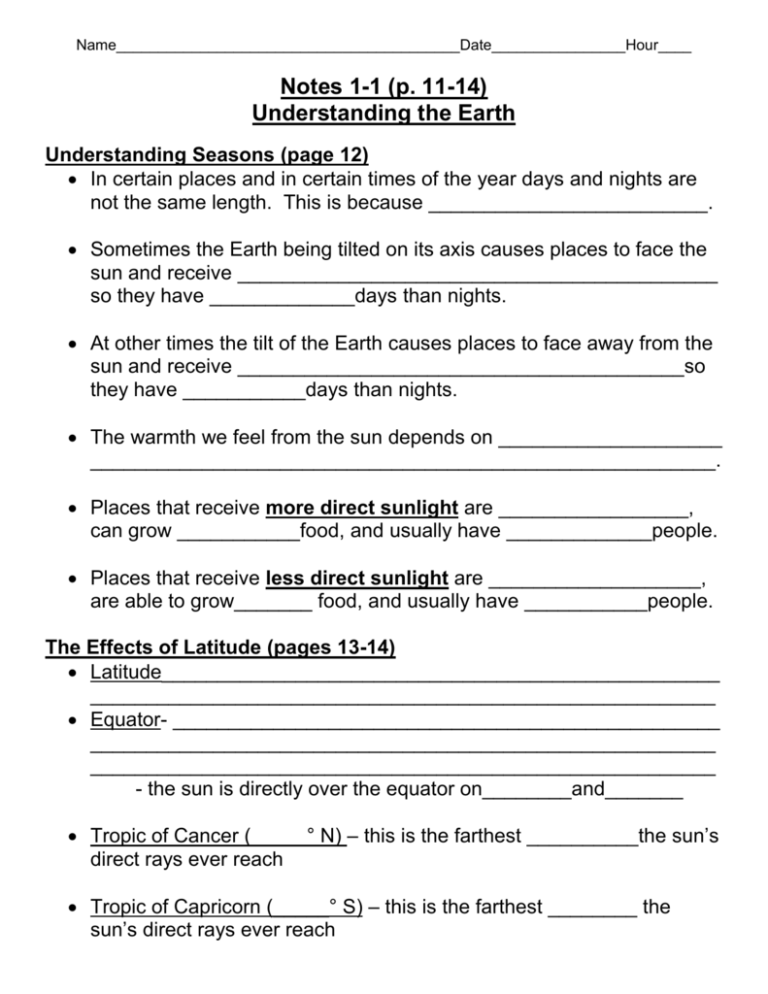
Name_________________________________________Date________________Hour____ Notes 1-1 (p. 11-14) Understanding the Earth Understanding Seasons (page 12) In certain places and in certain times of the year days and nights are not the same length. This is because _________________________. Sometimes the Earth being tilted on its axis causes places to face the sun and receive ___________________________________________ so they have _____________days than nights. At other times the tilt of the Earth causes places to face away from the sun and receive ________________________________________so they have ___________days than nights. The warmth we feel from the sun depends on ____________________ ________________________________________________________. Places that receive more direct sunlight are _________________, can grow ___________food, and usually have _____________people. Places that receive less direct sunlight are ___________________, are able to grow_______ food, and usually have ___________people. The Effects of Latitude (pages 13-14) Latitude__________________________________________________ ________________________________________________________ Equator- _________________________________________________ ________________________________________________________ ________________________________________________________ - the sun is directly over the equator on________and_______ Tropic of Cancer (_____° N) – this is the farthest __________the sun’s direct rays ever reach Tropic of Capricorn (_____° S) – this is the farthest ________ the sun’s direct rays ever reach The Tropical Zone From the _______________________________to the ________________________. The area between __________ *N and __________ *S Also called _________________________because this area includes ________________________________________________________. Every place in this region receives ____________________________. The temperature is ___________________year round. This area ___________________________seasons. The Temperate Zone From the ________________________________to the ___________________in the north and from the _________________ to the _________________________in the south. The area between _________*N and _________*N and __________*S and ___________*S Also called ____________________________because this area includes ________________________________________________. This area is not as hot as the tropics because ___________________ ___________________________. The temperate zone receives _________sunlight in the _________________than the __________. This area has _________________ with a warmer ____________and a colder _____________. The Polar Zone From the __________________________to the ________________ in the north and from the _________________ to the _____________ _in the south. The area between _________*N and __________*N and ___________*S and ________*S Also called ____________________________because this area includes ________________________________________________. The polar zone receives _________ sunlight during the year and is _____________________. This area has a__________________ with a ____________________ Summer months are light almost ________________and winter months are dark ________________________ Use pages 13-14 and the map on page 8 to label the globe with the following. Be careful, some will be used twice. Equator Tropic of Capricorn Tropic of Cancer Arctic Circle Antarctic Circle Low Latitudes Middle Latitudes High Latitudes Tropics Temperate Zone Polar Zone
